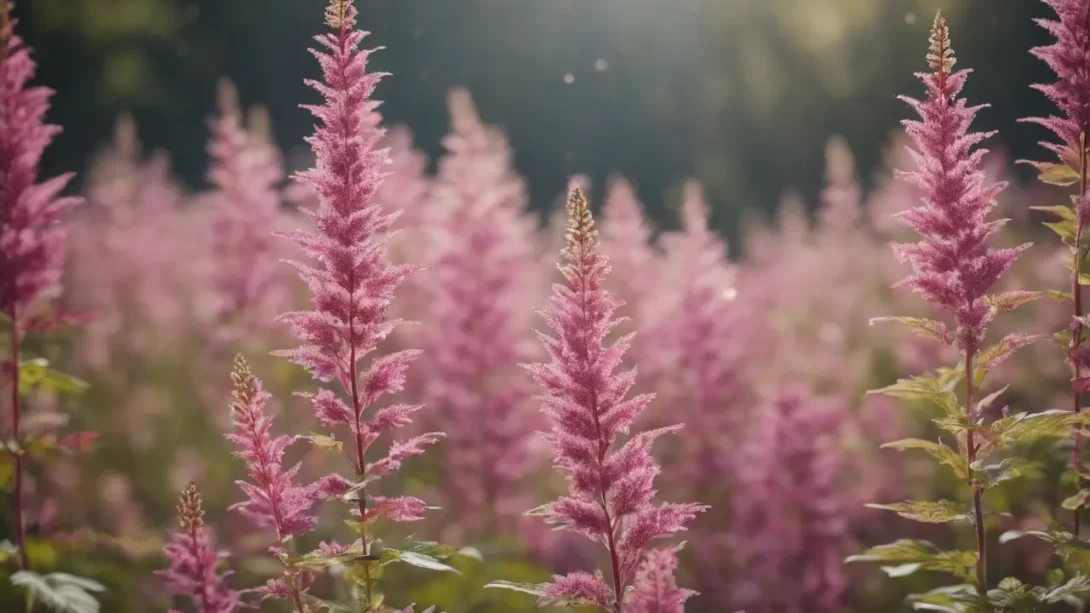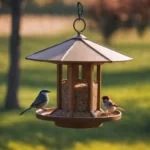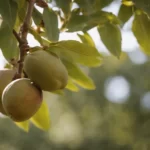Gardeners often face the challenge of protecting their beloved plants from wildlife, particularly deer. These graceful yet voracious creatures can turn a thriving garden into a buffet overnight. Among the various plants that beautify our gardens, Astilbe holds a special place for its lush foliage and vibrant, feathery blooms. However, the question arises: does this popular ornamental plant attract deer? This article delves into the relationship between deer and Astilbe, offering insights for gardeners looking to maintain a harmonious landscape.
Deer Behavior in Gardens
Deer are known for their adaptable feeding habits, which can often lead them into our gardens. Their diet primarily consists of leaves, grass, fruits, and nuts, but it can vary significantly based on what’s available. Several factors influence their choice of plants, including taste, texture, and the nutritional value. Additionally, deer feeding patterns change with the seasons; they’re more likely to venture into gardens during late fall and winter when food is scarce. Understanding these behaviors is crucial in predicting and managing their impact on garden plants like Astilbe.
Astilbe: An Overview
Astilbe, known for its feathery plumes and fern-like foliage, is a favorite among gardeners for adding texture and color to shaded garden spots. These perennials, belonging to the family Saxifragaceae, thrive in moist, well-drained soil and partial to full shade. They come in a variety of colors including white, pink, red, and purple, making them versatile for different garden designs. Astilbe’s bloom time, depending on the variety, can range from late spring to late summer, providing a long season of visual interest. Their ease of care and striking appearance make them a popular choice for both novice and experienced gardeners.
Deer and Astilbe: The Likelihood of Feeding
When it comes to deer, their feeding habits can sometimes be unpredictable, but they generally prefer plants that are tender, high in water content, and nutritious. Astilbe, with its woody stems and dense foliage, doesn’t naturally top the list of deer favorites. The texture of Astilbe leaves can be less appealing to deer compared to softer, more succulent plants. However, in times of food scarcity or lack of preferable options, deer might nibble on plants they usually avoid, including Astilbe. It’s important to note that while Astilbe isn’t a primary choice for deer, it’s not entirely deer-proof. Observations from gardeners and horticulturists suggest that deer may sample Astilbe, especially young, tender shoots, but they typically do not devour these plants as they would with more favored foliage.
Protecting Astilbe from Deer
If you’re growing Astilbe in an area frequented by deer, it’s wise to take preventive measures. Physical barriers are the most effective, with fencing being the top choice. A fence that is at least 8 feet tall can deter most deer, although this may not be practical or aesthetically pleasing in all garden settings. Alternative deterrents include deer repellents, which can be either commercial products or homemade concoctions. These typically work by emitting smells that are unpleasant to deer, such as garlic, soap, or eggs. Repellents need regular reapplication, especially after rain. Another strategy is to interplant Astilbe with plants that are known to be less appealing to deer, like lavender, catmint, or marigolds, creating a natural barrier of sorts. Remember, while no method is foolproof, combining strategies can significantly reduce the likelihood of deer feasting on your Astilbe.
Alternative Deer-Resistant Plants
In gardens where deer presence is a significant concern, choosing plants that are naturally less appealing to deer can be a wise strategy. Plants with strong scents, such as herbs (like mint, sage, and rosemary), or those with prickly textures, are generally less favored by deer. Some flowering options include foxglove, Russian sage, and peonies, which, along with their aesthetic appeal, offer some resistance to deer. It’s always a good idea to research and select plants that not only suit your garden’s aesthetic and climatic conditions but also naturally deter wildlife, ensuring a harmonious and thriving garden ecosystem.
Integrating Astilbe and Deer-Resistant Gardening Techniques
For gardeners committed to growing Astilbe in deer-populated areas, integrating deer-resistant gardening techniques is key. Companion planting can be an effective strategy. Surrounding Astilbe with highly deer-resistant plants can create a natural deterrent. Plants like daffodils, which are toxic to deer, or strong-smelling herbs can protect more vulnerable plants. Additionally, maintaining healthy, vigorous plants can sometimes deter deer, as they often target weaker, stressed plants.
Understanding and Adapting to Local Deer Populations
The likelihood of deer feasting on your Astilbe can also depend on the local deer population and their accustomed diet. In areas where food is abundant, deer may completely ignore Astilbe. Conversely, in regions with limited food sources, even typically resistant plants might be at risk. It’s beneficial to observe local deer behavior and adjust your gardening strategies accordingly. Talking to local gardeners and extension services can provide valuable insights into what works in your specific area.
Conclusion
In conclusion, while Astilbe is not a top choice for deer, it’s not completely immune to their grazing. The risk of deer eating Astilbe can vary based on local deer populations and the availability of other food sources. By employing strategies like physical barriers, repellents, and companion planting, gardeners can better protect their Astilbe and other susceptible plants. Additionally, understanding local deer behavior and adapting garden choices can lead to a more harmonious coexistence with wildlife. Embracing these practices allows gardeners to enjoy the beauty of Astilbe without the worry of undue damage from deer.



